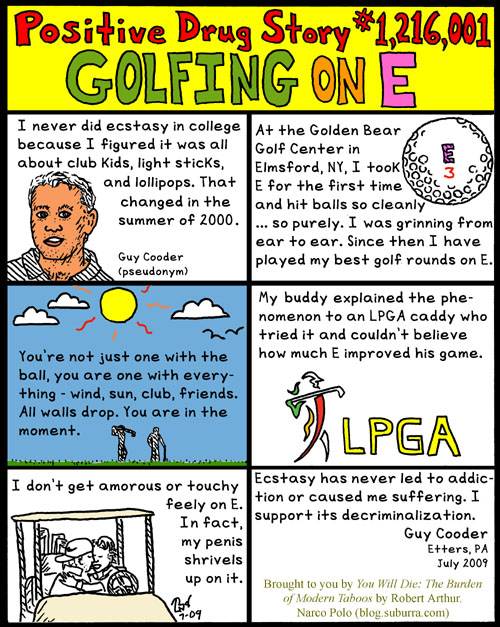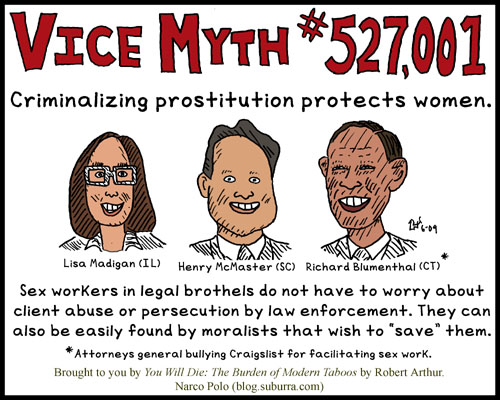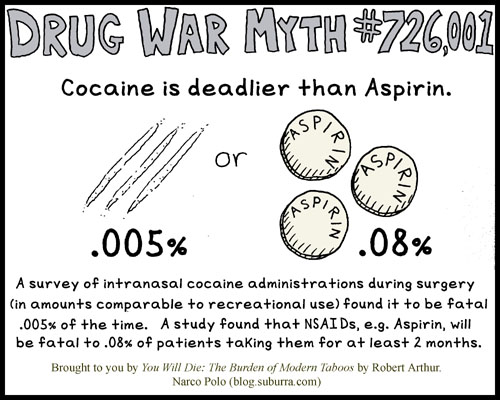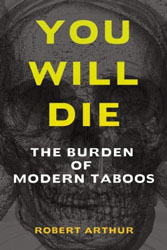Posted: July 11th, 2009 | Filed under: DEA, drugs, ecstasy, legalization, media bias | 2 Comments »

The biochemist, Alexander Shulgin, first reported MDMA’s beneficial effects in a journal article in 1978. MDMA, or ecstasy, creates empathy in its users and has exhibited great potential as a psychotherapy tool. Shulgin himself enjoyed using it to loosen up and relate to others at social gatherings.
Despite the fact psychologists and psychiatrists championed its value in therapy, when young adults started using it as a club drug in the 1980s the DEA made it a Schedule I Drug. This classification is supposed to be restricted to drugs with high abuse potential and no acceptable medical uses. [MDMA has no addiction potential. (Gahlinger, p. 338)] A DEA pharmacologist has admitted the DEA wasn’t even aware psychiatrists were using MDMA for treatment. In other words, they did not bother to research the drug before deciding to throw adults in prison for its possession.
The mass media proceeded to jump on the “all recreational drugs are evil” bandwagon by portraying ecstasy as a drug that leads kids to crazy casual sex and death. MDMA causes empathy not increased libido. The fallacy of it being a sex drug is obvious for many men as Cooder notes in the above cartoon. For the gross exagerration of its deadliness see the previous post, “Deadly Nuts: If Peanuts Were Portrayed Like E.”
As Jacob Sullum wrote in Saying Yes, “Like LSD, [MDMA] became illegal because too many people started to enjoy it.” (Sullum, p. 171)
To preempt MDMA destroys your brain comments, here is a link to Shulgin’s response and a 2006 journal article link disproving the brain damage theories.
Request for Positive Drug Stories
If you have a positive drug story that is either unique, humorous, or interesting; and are willing to have it told through illustrations please contact me at rob@suburra.com. Anonymity is respected.
Sources:
1. Paul Gahlinger, Illegal Drugs (2001).
2. Jacob Sullum, Saying Yes (2003).
Posted: July 1st, 2009 | Filed under: legalization, prostitution | 3 Comments »

Attorneys General across America have been getting themselves press by hounding the online classifieds service, Craigslist, for facilitating prostitution. According to ABC News there is “public outrage” over Craigslist. This prudish moral grandstanding would be less noxious if it did not cloak itself as protecting women.
Supposedly this public outrage grew due to the “Craigslist Killer,” Philip Markoff, who is charged with murdering a woman he found through Craigslist’s erotic services category. According to Connecticut Attorney General Richard Blumenthal Craigslist had to shut down its erotic services listings saying:
We have a responsibility to protect children and women and anyone who may be victims of these kinds of criminal activity that may involve human trafficking, child exploitation, other brutal and violent crime.
What? If it was not for Craigslist, police would not have been able to track down Markoff. (They traced his Craigslist e-mails.)
Driving sex work underground is exactly what makes it dangerous. Sex workers in legal brothels do not have to worry about client abuse or persecution by law enforcement. They can also be easily found by moralists that wish to “save” them.
Blumenthal told ABC News, “We’re not going away.”
Mr. Blumenthal, that is why sex workers’ lives are endangered.
Read more at the prior post “The $1,000/hr Victim”. To hear the voices of proud, intelligent, and fabulous sex workers go to the blog, Bound, Not Gagged.
Sources:
1. Lisa Fletcher, et al., “Fingerprints, Scratches Tied to Craigslist Suspect,” ABCNews.Go.com, 23 Apr. 2009. LINK
2. Sarah Netter, “Craigslist Clean-Up: Is it Really Working?” ABCNews.Go.com, 20 June 2009. LINK
Posted: May 31st, 2009 | Filed under: cocaine, drugs, media bias | 3 Comments »

Our government and the mainstream media implicitly and explicitly justify the war on drugs by perpetuating the myth that drugs are extremely deadly. Illegal drugs do kill (just like ladders, cars, and swimming pools kill) but (1) most of the fatalities stem from the criminalization that forces drugs into the black market (see heroin example at this post), and (2) even this risk is greatly exaggerated.
For example, the deadliness of cocaine and Aspirin are in fact comparable. A survey of intranasal cocaine administrations during surgery (in amounts comparable to recreational use) found it to be fatal .005% of the time. A study found that non-steroidal anti-inflammatory drugs, e.g. Aspirin, Ibuprofen, Aleve, will be fatal to .08% of patients taking them for at least two months.
Critics will point out that these are two different metrics that do not provide proper comparison (two months of usage vs. one administration). My response is that (1) these are the only metrics available and (2) my point is not to establish one is safer than the other but to show that – contrary to popular perception – their deadliness is similar.
To see how cocaine fatality statistics are inflated go to “Billy Mays’ Corpse Gets Trampled by Cocaine Hype.”
Sources:
1. Robert Arthur, You Will Die: The Burden of Modern Taboos (2008), p. 333.
2. Martin Tramer, et al., “Quantitative Estimation of Rare Adverse Events Which Follow A Biological Progression: A New Model Applied to Chronic NSAID Use,” Pain, 2000, 85:169-182.
3. Linda Wong & Bruce Alexander, “‘Cocaine-Related’ Deaths,” Journal of Drug Issues, Winter 1991.





